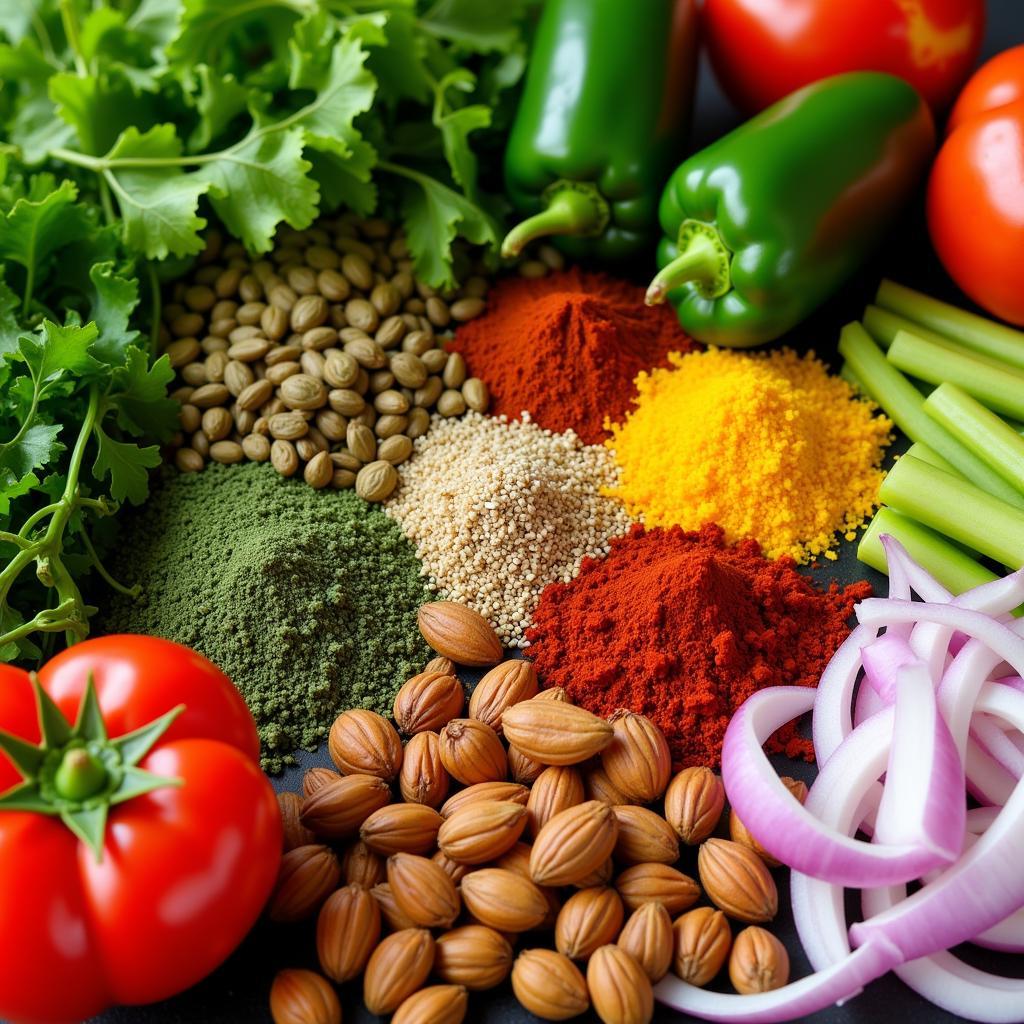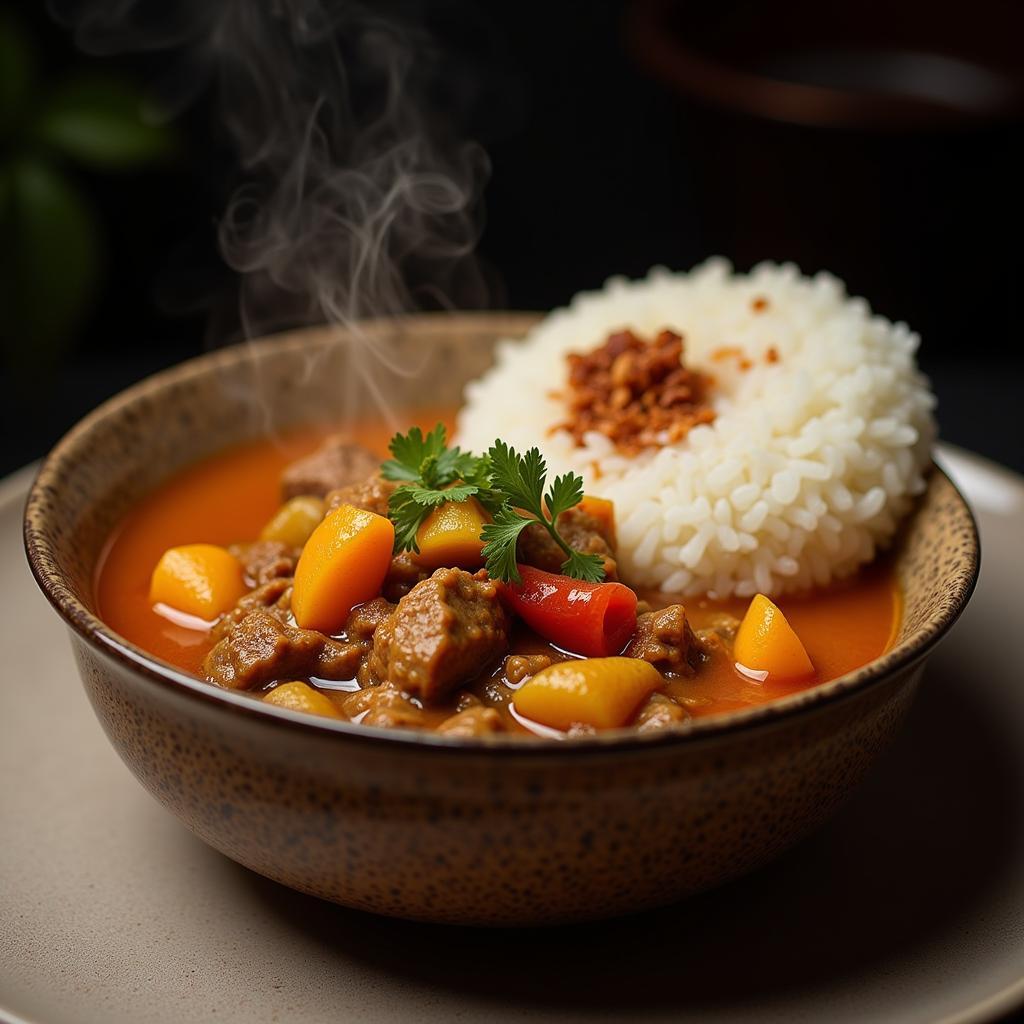African Efo Riro Soup: A Delicious Dive into Nigerian Cuisine with Full HD 2000 x 2000 Images
Efo riro soup, a vibrant and flavorful Nigerian stew, is a culinary masterpiece that tantalizes taste buds worldwide. This article explores the rich history, diverse variations, and cultural significance of efo riro soup, accompanied by stunning visuals that capture its essence in full HD 2000 x 2000 images. We’ll delve into the intricacies of this West African delicacy, from its traditional preparation to its modern adaptations, satisfying your craving for both knowledge and visual delight.
Unveiling the History and Cultural Significance of Efo Riro
Efo riro, meaning “vegetable soup” in Yoruba, is more than just a dish; it’s a cultural emblem deeply rooted in the southwestern region of Nigeria. The soup embodies the resourcefulness and ingenuity of Yoruba cuisine, utilizing readily available leafy greens and combining them with rich, flavorful ingredients. Traditionally prepared for special occasions and celebrations, efo riro soup represents community, togetherness, and the appreciation of nature’s bounty. It has evolved over generations, passed down through families, each adding their unique touch while preserving its core essence.
Efo riro is often served with various Nigerian staples like fufu, amala, or eba. The combination of the rich, savory soup and the starchy accompaniment creates a balanced and satisfying meal. The soup’s versatility allows it to be paired with different protein sources like beef, fish, or goat meat, further enhancing its flavor profile and nutritional value. Beyond its culinary significance, efo riro holds a special place in social gatherings, fostering connections and strengthening bonds.
 Nigerian Efo Riro Soup Ingredients
Nigerian Efo Riro Soup Ingredients
Exploring the Variety of Efo Riro: From Traditional to Modern
While the fundamental components of efo riro remain consistent, regional and personal preferences have given rise to diverse variations. From the use of different leafy greens like spinach, waterleaf, or pumpkin leaves, to the inclusion of smoked fish, dried prawns, or locust beans, each variation offers a distinct flavor profile. Modern adaptations have also emerged, incorporating ingredients like assorted meats, seafood, and even incorporating global influences while retaining the essence of this traditional Nigerian dish.
One popular variation involves the use of smoked fish or dried prawns, which adds a smoky and umami depth to the soup. Another version features the addition of locust beans, known as iru, which imparts a unique fermented flavor. These variations highlight the adaptability of efo riro and its ability to cater to a wide range of palates.
Creating Authentic Efo Riro: A Step-by-Step Guide
Making efo riro soup at home is a rewarding experience. Here’s a simplified guide to creating this delicious dish:
- Prepare the ingredients: Wash and chop the leafy greens, onions, peppers, and tomatoes.
- Blend the peppers and onions: Create a smooth paste using a blender or food processor.
- Sauté the blended mixture: Heat palm oil or vegetable oil in a pot and sauté the blended pepper and onion mixture.
- Add protein and seasonings: Incorporate your preferred protein (beef, fish, or goat meat) and seasonings like salt, pepper, and ground crayfish.
- Simmer and incorporate the leafy greens: Allow the mixture to simmer before adding the chopped leafy greens.
- Cook until tender: Cook the soup until the greens are tender and the flavors have melded together.
“Efo riro is a labor of love,” says Adeola Oladele, a renowned Nigerian chef. “The time spent preparing and simmering the ingredients allows the flavors to deepen and develop, resulting in a truly satisfying culinary experience.”
 Delicious Efo Riro Soup Served with Fufu
Delicious Efo Riro Soup Served with Fufu
Efo Riro Soup: A Culinary Journey through Nigerian Flavors
From its humble origins to its modern iterations, efo riro soup continues to be a cherished dish in Nigerian cuisine. Its vibrant flavors, nutritional value, and cultural significance make it a truly unique culinary experience. Whether enjoyed during festive occasions or as a comforting weeknight meal, efo riro offers a delicious glimpse into the heart of Nigerian gastronomy. So, embark on this culinary adventure and savor the rich tapestry of flavors that this iconic soup has to offer.
FAQ
-
What type of leafy greens are used in efo riro? Spinach, waterleaf, pumpkin leaves, and shoko are commonly used.
-
Can I use other oils besides palm oil? Yes, vegetable oil or canola oil can be substituted.
-
What are some common accompaniments to efo riro soup? Fufu, amala, eba, and pounded yam are popular choices.
-
How long can efo riro soup be stored? Refrigerate for up to 3 days or freeze for longer storage.
-
Is efo riro soup spicy? The level of spiciness can be adjusted based on personal preference.
“The beauty of efo riro lies in its simplicity and versatility,” adds Chef Oladele. “It’s a dish that can be enjoyed by everyone, regardless of their culinary background.”
For assistance or inquiries, please contact us at +255768904061, email [email protected], or visit us in Mbarali DC Mawindi, Kangaga, Tanzania. We offer 24/7 customer support.



